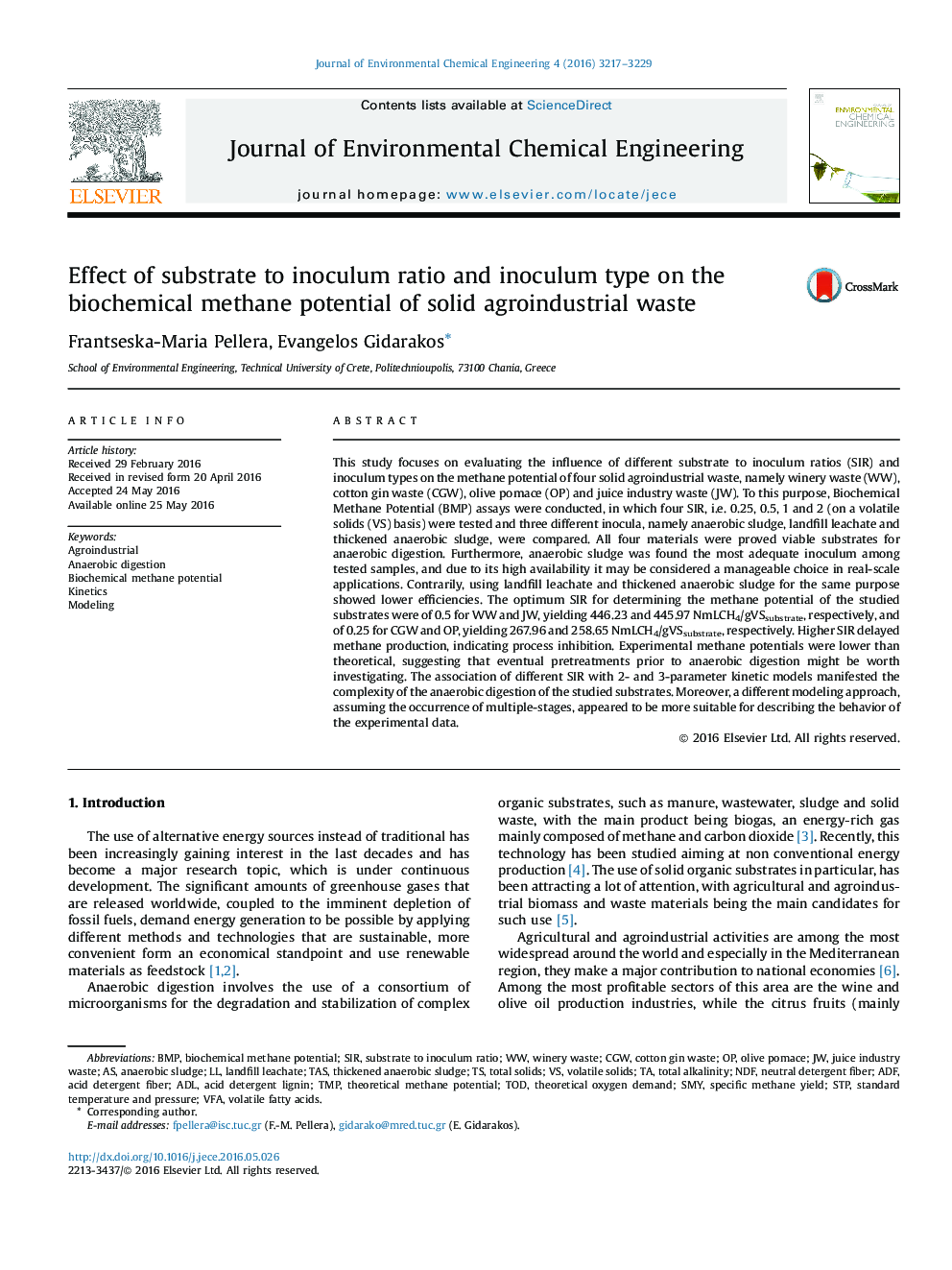| کد مقاله | کد نشریه | سال انتشار | مقاله انگلیسی | نسخه تمام متن |
|---|---|---|---|---|
| 221587 | 464260 | 2016 | 13 صفحه PDF | دانلود رایگان |
• Optimum substrate to inoculum ratios for methane potential equaled 0.25 and 0.5.
• Higher substrate amounts delayed methane production indicating process inhibition.
• Anaerobic sludge performed better as inoculum, compared with the other two samples.
• Affinity of kinetic models to the data is dependent on substrate to inoculum ratio.
• Multiple-stage-modeling approach provided a better description of experimental data.
This study focuses on evaluating the influence of different substrate to inoculum ratios (SIR) and inoculum types on the methane potential of four solid agroindustrial waste, namely winery waste (WW), cotton gin waste (CGW), olive pomace (OP) and juice industry waste (JW). To this purpose, Biochemical Methane Potential (BMP) assays were conducted, in which four SIR, i.e. 0.25, 0.5, 1 and 2 (on a volatile solids (VS) basis) were tested and three different inocula, namely anaerobic sludge, landfill leachate and thickened anaerobic sludge, were compared. All four materials were proved viable substrates for anaerobic digestion. Furthermore, anaerobic sludge was found the most adequate inoculum among tested samples, and due to its high availability it may be considered a manageable choice in real-scale applications. Contrarily, using landfill leachate and thickened anaerobic sludge for the same purpose showed lower efficiencies. The optimum SIR for determining the methane potential of the studied substrates were of 0.5 for WW and JW, yielding 446.23 and 445.97 NmLCH4/gVSsubstrate, respectively, and of 0.25 for CGW and OP, yielding 267.96 and 258.65 NmLCH4/gVSsubstrate, respectively. Higher SIR delayed methane production, indicating process inhibition. Experimental methane potentials were lower than theoretical, suggesting that eventual pretreatments prior to anaerobic digestion might be worth investigating. The association of different SIR with 2- and 3-parameter kinetic models manifested the complexity of the anaerobic digestion of the studied substrates. Moreover, a different modeling approach, assuming the occurrence of multiple-stages, appeared to be more suitable for describing the behavior of the experimental data.
Journal: Journal of Environmental Chemical Engineering - Volume 4, Issue 3, September 2016, Pages 3217–3229
